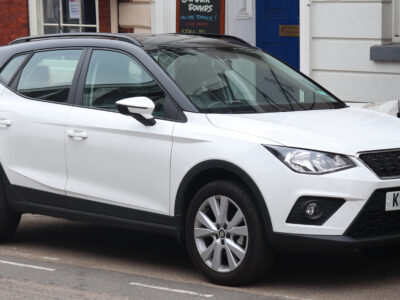
MG HS Tyre Pressure Guide: Recommended Settings, Chart, and Maintenance Tips

Maintaining the correct MG HS tyre pressure is one of the simplest yet most effective ways to ensure safe driving, optimal fuel economy, and prolonged tyre life. In this comprehensive guide, we’ll cover everything from recommended PSI and bar levels for each MG HS variant to practical tips for checking and adjusting pressure at home.
- Why Correct Tyre Pressure Matters
- MG HS Tyre Pressure Chart (All Variants)
- Front and Rear Tyre Pressure Settings
- Tyre Pressure by Engine Type
- Tyre Size Options and Corresponding Pressures
- How to Check MG HS Tyre Pressure
- How to Inflate Tyres Correctly
- Common Tyre Pressure Problems
- Tyre Pressure Monitoring System (TPMS) in MG HS
- Effects of Overinflated and Underinflated Tyres
- How Often to Check Tyre Pressure
- Tips for Long Trips and Cold Weather
- When to Replace Tyres
- Conclusion
- FAQs
Why Correct Tyre Pressure Matters
Tyre pressure is more than just a maintenance detail—it’s a safety essential. The right pressure ensures maximum contact between the tyre and the road, providing better handling, braking, and overall control. Low pressure increases rolling resistance and fuel consumption, while high pressure reduces grip and causes uneven tyre wear.
MG HS Tyre Pressure Chart (All Variants)
Below is the verified MG HS tyre pressure table, based on the recommended PSI (pounds per square inch) and bar settings for different engines and tyre sizes:
| Engine Version | Tyre Size | Front Tyre Pressure (PSI / Bar) | Rear Tyre Pressure (PSI / Bar) |
|---|---|---|---|
| 1.5T GDI | 215/60 R17 | 34 / 2.3 | 34 / 2.3 |
| 1.5T GDI | 235/50 R18 | 36 / 2.5 | 36 / 2.5 |
| 2.0T GDI | 215/60 R17 | 34 / 2.3 | 34 / 2.3 |
| 2.0T GDI | 235/50 R18 | 36 / 2.5 | 36 / 2.5 |
| 1.5T GDI (PHEV) | 215/60 R17 | 34 / 2.3 | 34 / 2.3 |
| 1.5T GDI (PHEV) | 235/50 R18 | 36 / 2.5 | 36 / 2.5 |
Tip: Always check your MG HS tyre pressure when the tyres are cold, ideally before driving or after the car has been parked for at least 3 hours.
Front and Rear Tyre Pressure Settings
The MG HS typically requires identical pressure levels for both the front and rear tyres. However, always double-check the driver’s side door frame sticker, which provides the exact figures for your specific model and tyre brand.
You may be interested in reading MG HS Towing Capacity Guide (2025): Complete Braked and Unbraked Limits Explained
MG HS Towing Capacity Guide (2025): Complete Braked and Unbraked Limits ExplainedTyre Pressure by Engine Type
1. MG HS 1.5T GDI
- Standard tyre: 215/60R17 — 34 PSI (2.3 bar)
- Optional tyre: 235/50R18 — 36 PSI (2.5 bar)
2. MG HS 2.0T GDI
- Standard tyre: 215/60R17 — 34 PSI (2.3 bar)
- Optional tyre: 235/50R18 — 36 PSI (2.5 bar)
3. MG HS PHEV (Plug-in Hybrid)
- Standard tyre: 215/60R17 — 34 PSI (2.3 bar)
- Optional tyre: 235/50R18 — 36 PSI (2.5 bar)
Tyre Size Options and Corresponding Pressures
The MG HS can come equipped with 17-inch or 18-inch alloy wheels, depending on the trim level. Larger tyres (18-inch) require slightly higher pressure due to increased air volume and load rating.
How to Check MG HS Tyre Pressure
- Use a reliable digital pressure gauge.
- Remove the valve cap and press the gauge onto the valve stem.
- Compare the reading to the manufacturer’s recommendations.
- Adjust as necessary using a compressor or deflator.
- Replace valve caps tightly to prevent leaks.
You’ll find the recommended values on:
- The driver’s door frame sticker
- The owner’s manual
- Sometimes, inside the fuel filler flap
How to Inflate Tyres Correctly
- Park on level ground and turn off the engine.
- Connect your portable air compressor or a service station air hose.
- Inflate gradually, checking pressure often.
- Avoid overinflation—release small amounts of air if necessary.
- Confirm the final pressure matches the recommended PSI/bar.
Common Tyre Pressure Problems
| Problem | Likely Cause | Solution |
|---|---|---|
| Tyres losing pressure frequently | Valve stem leaks or puncture | Check for slow leaks and repair/replace |
| Uneven tyre wear | Incorrect alignment or over/underinflation | Rebalance and correct pressure levels |
| TPMS light on | Low pressure in one or more tyres | Inflate to the proper PSI and reset system |
| Hard steering or poor grip | Overinflated tyres | Reduce pressure to manufacturer’s recommendation |
Tyre Pressure Monitoring System (TPMS) in MG HS
The MG HS features a direct TPMS, meaning sensors inside each wheel monitor tyre pressure individually. When the TPMS warning light appears:
- Check all tyres manually using a pressure gauge.
- Adjust the low-pressure tyre(s) to the correct level.
- Drive for several minutes; the system will reset automatically.
- If the light remains on, have the sensors checked by a technician.
Effects of Overinflated and Underinflated Tyres
- Overinflated Tyres:
- Reduced traction
- Harsher ride comfort
- Increased risk of impact damage
- Underinflated Tyres:
- Increased fuel consumption
- Faster shoulder wear
- Poor braking response
- Risk of tyre blowout
How Often to Check Tyre Pressure
We recommend checking your MG HS tyre pressure:
- Once every two weeks
- Before long trips
- During significant temperature changes
Cold weather can cause pressure to drop by 1 PSI for every 5°C decrease in temperature, so winter checks are especially crucial.
You may be interested in reading MG HS Towing Capacity Guide (2025): Complete Braked and Unbraked Limits Explained
MG HS Towing Capacity Guide (2025): Complete Braked and Unbraked Limits Explained MG HS Dashboard Warning Lights and Symbols Explained (2018–2025)
MG HS Dashboard Warning Lights and Symbols Explained (2018–2025)Tips for Long Trips and Cold Weather
- Inflate to the upper recommended limit before long highway drives.
- In cold climates, check tyres when cold to get accurate readings.
- Keep a portable inflator in your boot for emergencies.
- Inspect tread depth regularly to ensure grip and braking efficiency.
When to Replace Tyres
Replace tyres when:
- Tread depth is below 1.6 mm (UK legal limit)
- Tyres show uneven wear patterns
- Cracks or bulges appear on sidewalls
- You experience vibration or excessive noise
Conclusion
Maintaining proper MG HS tyre pressure isn’t just about comfort—it’s about safety, performance, and efficiency. By keeping your tyres inflated to the correct PSI or bar values, you ensure optimal handling and reduce the risk of wear or failure. A small habit like checking pressure regularly can make a big difference in the longevity and reliability of your MG HS.
FAQs
1. What is the correct tyre pressure for MG HS?
Between 34 PSI (2.3 bar) for 17-inch tyres and 36 PSI (2.5 bar) for 18-inch tyres, depending on the model and engine type.
2. Does the MG HS have a TPMS?
Yes, all MG HS models feature a Tyre Pressure Monitoring System that alerts drivers when pressure is too low.
3. Should tyre pressure be the same front and rear?
Yes, MG HS typically requires equal front and rear pressures under normal load conditions.
 MG HS Towing Capacity Guide (2025): Complete Braked and Unbraked Limits Explained
MG HS Towing Capacity Guide (2025): Complete Braked and Unbraked Limits Explained MG HS Dashboard Warning Lights and Symbols Explained (2018–2025)
MG HS Dashboard Warning Lights and Symbols Explained (2018–2025) How to Reset Tyre Pressure on the MG HS (Full Guide)
How to Reset Tyre Pressure on the MG HS (Full Guide)4. How do I reset the TPMS light on MG HS?
After inflating all tyres correctly, drive for 5–10 minutes; the light should reset automatically. If not, a sensor may need inspection.
5. Can I use nitrogen instead of air?
Yes. Nitrogen helps maintain stable pressure longer and reduces moisture inside the tyre, though standard air is perfectly safe.
If you want to know other articles similar to MG HS Tyre Pressure Guide: Recommended Settings, Chart, and Maintenance Tips you can visit the category Service and Parts.
Deja una respuesta

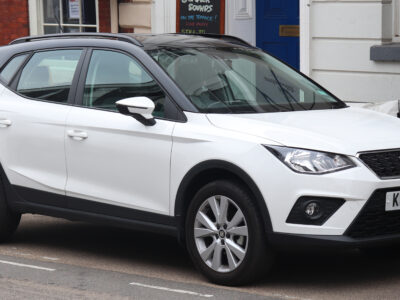
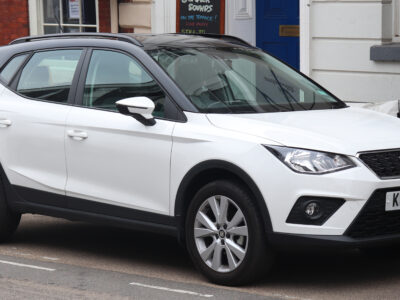
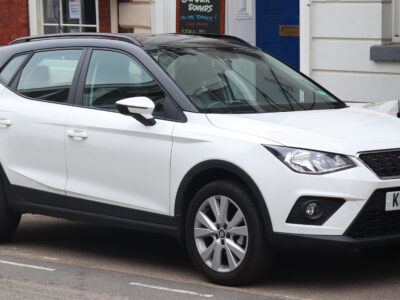
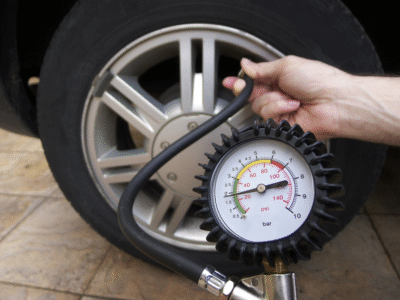
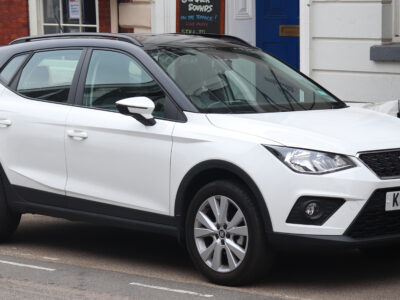
More content of your interest